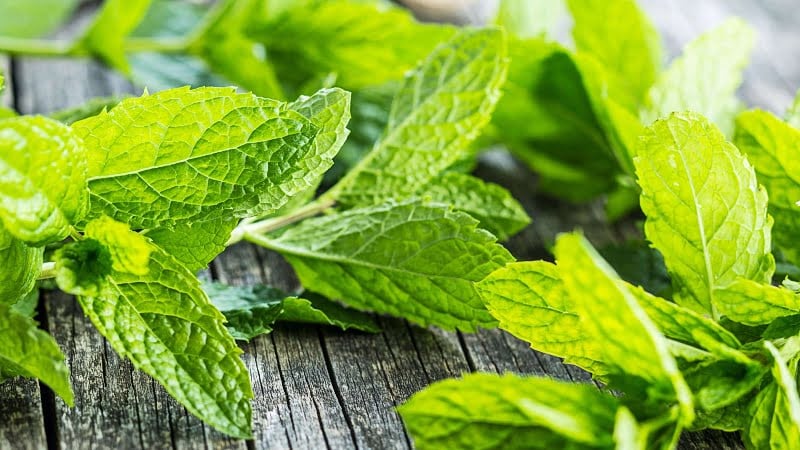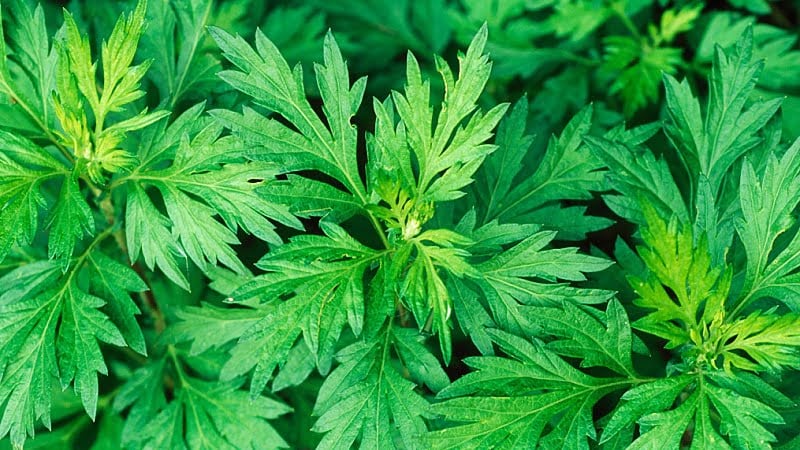Best Herbs You Can Mix With Weed

Herbal blends or smoke mixes that combine marijuana and dried flowers like lavender, or medicinal plants like mullein, help to improve the flavor of your smoke and may drastically enhance the effects.
Adding certain herbs or medicinal flowers to your cannabis as an herbal smoke blend takes ‘roll your own’ to a brand new level.
Whether you smoke hand rolls or pack a pipe, herbal blends are a great way to change up the marijuana experience.
What Are The Benefits of Mixing Herbs With Cannabis?
There are three reasons someone may decide to mix a given herb with cannabis:
The first reason is to improve the flavor of the blend. Aromatic herbs like rosemary, lavender, or damiana work best for this.
The second reason is to provide additional benefits from the mix. For example, if you’re making a blend for the evening, you can add calming herbs like chamomile, blue lotus flower, or lavender.
The third reason is to negate unwanted side effects produced by weed. A common example is reducing the smoke’s harshness with herbs like mullein.
Depending on which herbs you add to your smoke blend, you can amplify specific qualities of your smoke experience, such as:
- Promote relaxation
- Boost uplifting and invigorating sensations
- Bolster the ‘high’ or hallucinogenic feelings
- Make dreams more vivid
Top 15 to Combine With Marijuana or Hemp
Below are a few ideas of common herbs that you can add to your smoking blend, as well as recommended ratios for the quantity to include in the mix with your cannabis flower.
When sampling different herbal blends, try a few combinations and ratios until you find the mixtures that you enjoy.
You might prefer to add more or less of a certain herb depending on the effect profile you’re seeking from the smoke experience, so take time to try out a few herbal mixes and see which ones work best for you.
1. Tobacco
How much to add: up to 50%
Tobacco is commonly added to cannabis to create a stimulating smoke blend. Once leaves from the tobacco plant are harvested, they are cured and dried out, which makes it easy to add to a smoke mix for a hand-rolled cigarette or a pipe.
Although in our current culture, tobacco tends to have a complicated reputation, it has had many uses throughout history. Tobacco contains nicotine, which can boost you mentally and physically.
When mixed, these qualities tend to amplify the effects of marijuana and make it feel stronger.
2. Mullein
How much to add: up to 30%
Adding mullein to your herbal blend can help you achieve a smoother smoke. If you find smoking cannabis is too harsh on your throat, mullein is an excellent addition to your custom smoke blend.
Mullein has some properties that can minimize some of the coughings that are typically associated with smoking and reduce dryness.
3. Rose Petals
How much to add: up to 10%
Adding dried rose petals to a smoke blend is a great way to improve flavor and fragrance.
Dried roses have long been used for a variety of purposes. Roses are also well known as aphrodisiacs, so when included in an herbal smoke mix, the rose petals can offer mild euphoric benefits.
Roses are great for creating feelings of happiness and simultaneously offer users a sweet, aromatic smoking experience with a soft taste.
4. Mint

How much to add: up to 15%
The herb peppermint or ‘mint’ can make a great addition to a cannabis smoke blend. Mint adds a refreshing flavor to the marijuana. It’s considered to have rejuvenating and revitalizing properties for the body and the mind.
Mint has a relaxing effect profile, and when smoked, it can make the effects of the weed a little stronger.
In some cases, smoking mint has been likened to the taste of menthol and could be a good substitute for menthol cigarettes for those who are seeking to quit smoking cigarettes.
5. Lavender
How much to add: up to 15%
Lavender is a pleasant herb for smoking, thanks to its refreshing, light, aromatic flavor. It’s best known for its calming benefits. This is a good herb to include in blends designed to facilitate deeper relaxation.
Lavender offers the added benefit of smoothing out the harshness of the smoke and making it much less caustic on the throat and lungs.
6. Blue Lotus Flower
How much to add: up to 50%
Blue lotus flower can be dried and added to herbal smoke mixes. It has a calming effect that enhances the qualities of marijuana and adds to the mind-expanding effects.
The blue lotus flower contains the compounds apomorphine and nuciferine. These compounds are considered mild narcotics and tend to induce feelings of lucidity.
Many users who add blue lotus flower to herbal blends suggest that it increases the vividness of dreams.
7. Blue Vervain
How much to add: up to 25%
This plant, Blue Vervain (Verbena hastata), has a few ethnobotanical uses. The light purple flowers from the blue vervain plant can be smoked in cannabis blends when dried. It has a relaxing effect which tends to quiet excessive mental chatter. When smoked, blue vervain reduces stress, tension, and nervousness.
Its properties help relax the mind and are even reported to be uplifting. Some users suggest that blue vervain has helped them to achieve states of lucid dreaming or astral projection.
8. Chamomile
How much to add: up to 25%
Chamomile is best known for its calming effects, especially when smoked. This bolsters the relaxing effects of cannabis when the two are mixed in an herbal blend.
Chamomile also contributes a pleasant aromatic profile to the mix.
Overall, chamomile tends to be soothing and can pair well with cannabis in an herbal mix.
9. Damiana
How much to add: up to 25%
Dried damiana is a medicinal, yellow flower from a shrub plant and adds a nice, soft flavor and fragrance to a cannabis blend. When smoked, it’s thought to enhance the mind-expanding effects of cannabis, promote creativity and open-mindedness, and facilitate new ways of thinking.
This herb is best known for its aphrodisiac qualities. It was one of the go-to herbs for precolonial civilizations living in Mexico for enhancing libido and fertility.
Dried damiana is also known for improving mood and promoting relaxation, creating a mild sense of euphoria, and increasing creativity and imagination.
10. Jasmine
How much to add: up to 10%
Dried jasmine flower can make a nice addition to a cannabis smoke mix. It has a neutral, sweet fragrance and flavor, which helps to make the smoking experience a little lighter and less harsh.
The effect profile is relaxing and calming, which dramatically enhances the effects of marijuana.
Jasmine, like many other herbal flowers, tends to have some aphrodisiac qualities which increase arousal.
11. Lemon Balm
How much to add: up to 25%
Lemon balm (AKA Melissa) is closely related to peppermint. Instead of offering a minty flavor, lemon balm has a characteristic sweet and citrusy flavor that goes well with sativa cannabis strains.
In traditional herbalism, this plant is used for its powerfully relaxing and balancing benefits. The nice aroma is just an added bonus.
12. Mugwort

How much to add: up to 50%
Mugwort is a pungent and aromatic flower with psychotropic effects of its own (only when smoked).
Many ancient cultures harnessed the psychoactive effects of mugwort to induce lucid dreams and trance-like states. In low doses, it’s thought to enhance out-of-the-box thinking and creativity.
As a dried herb, mugwort has a sage-like flavor and, when paired with cannabis, can enhance the effects of marijuana.
It also has a quality that can even soften the smoke experience to make it less harsh on the throat.
13. Passionflower
How much to add: up to 25%
Passionflower contains a group of compounds known as harmala alkaloids that help balance emotions and may even boost some of the euphoric effects of marijuana.
It was also commonly used as an aphrodisiac (hence the common name).
14. Sage
How much to add: up to 25%
The sage plant has a long history of use as a spice and for health purposes. Sage is a powerful herb with many benefits. It’s known for purifying qualities which may be related to its strong flavor and aroma.
Sage is thought to intensify the high produced by marijuana. It makes the herb stronger and may facilitate lucid dreaming or trance-like states when used in higher doses.
In smaller concentrations, sage adds a pleasant aroma to the mix and helps reduce the harshness of the smoke.
15. Kanna
How much to add: Up to 25%
Kanna is a traditional African herb traditionally smoked for its uplifting benefits. It’s a great addition to a herb mix for adding general “positive vibes.”
When added to a cannabis smoke blend, kanna is reported to help reduce anxious side effects and help relieve overthinking or overstimulation.
Key Takeaways: What Herbs Go Well With Weed?
Many cannabis smokers enjoy using cannabis alone but can greatly improve the cannabis experience by adding certain herbs or dried flowers to create your own DIY smoking blend.
It helps to play around with the ratios here a little bit. Add some herbs, test it out, and change the ratios until you find what works best for you.
Smoking blends that combine hemp or cannabis with natural herbs and plant products are a nice way to improve the taste and aroma, reduce the harshness of the smoke, and provide a boost to the overall effect profile of the blend.
References:
- Charlton A. (2004). Medicinal uses of tobacco in history. Journal of the Royal Society of Medicine, 97(6), 292–296. [1]
- Arzu Ucar Turker, N.D Camper, Biological activity of common mullein, a medicinal plant. Journal of Ethnopharmacology, Volume 82, Issues 2–3, 2002, Pages 117-125.[2]
- Ying-Fen Tseng, Chung-Hey Chen, Yi-Hsin Yang, Rose Tea for Relief of Primary Dysmenorrhea in Adolescents: A Randomized Controlled Trial in Taiwan. Journal of Midwifery & Women’s Health, Volume 50, Issue 5, 2005, Pages e51-e57.[3]
- Shahrajabian M H, Cheng W, Cheng Q. Milk Thistle, Myrrh and Mint: Herbal Plants as Natural Medicines. Nutr Food Sci Res. 2021; 8 (3) :59-65.
- Koulivand, P. H., Khaleghi Ghadiri, M., & Gorji, A. (2013). Lavender and the nervous system. Evidence-based complementary and alternative medicine : eCAM, 2013, 681304.
- Edwards, S. E., da Costa Rocha, I., Williamson, E. M., & Heinrich, M. (2015). Damiana Turnera diffusa Willd. Ex Schult. Phytopharmacy: An Evidence-Based Guide to Herbal Medicinal Products, 123.
- Breivogel, C., & Jamerson, B. (2012). Passionflower extract antagonizes the expression of nicotine locomotor sensitization in rats. Pharmaceutical biology, 50(10), 1310–1316.
- Manganyi, M. C., Bezuidenhout, C. C., Regnier, T., & Ateba, C. N. (2021). A Chewable Cure “Kanna”: Biological and Pharmaceutical Properties of Sceletium tortuosum. Molecules (Basel, Switzerland), 26(9), 2557.